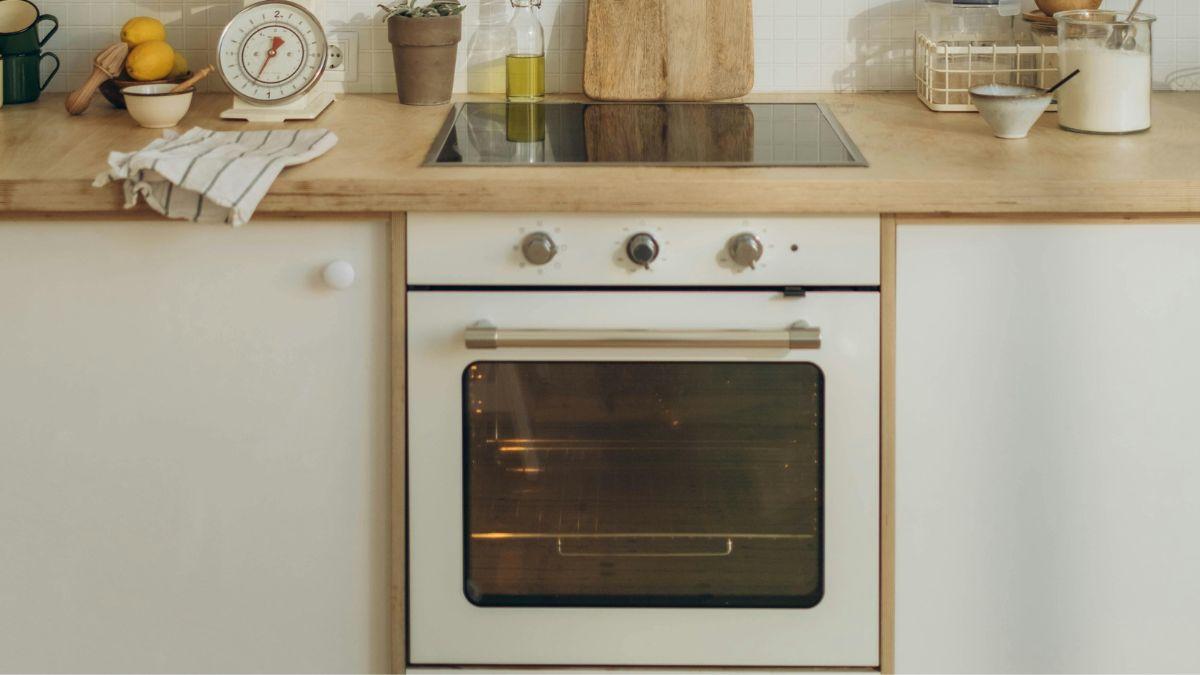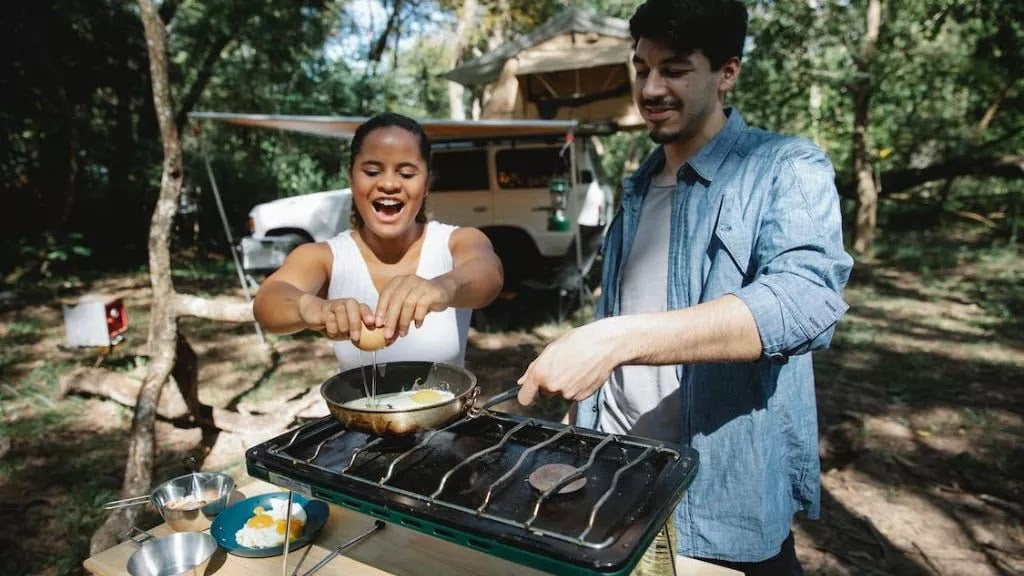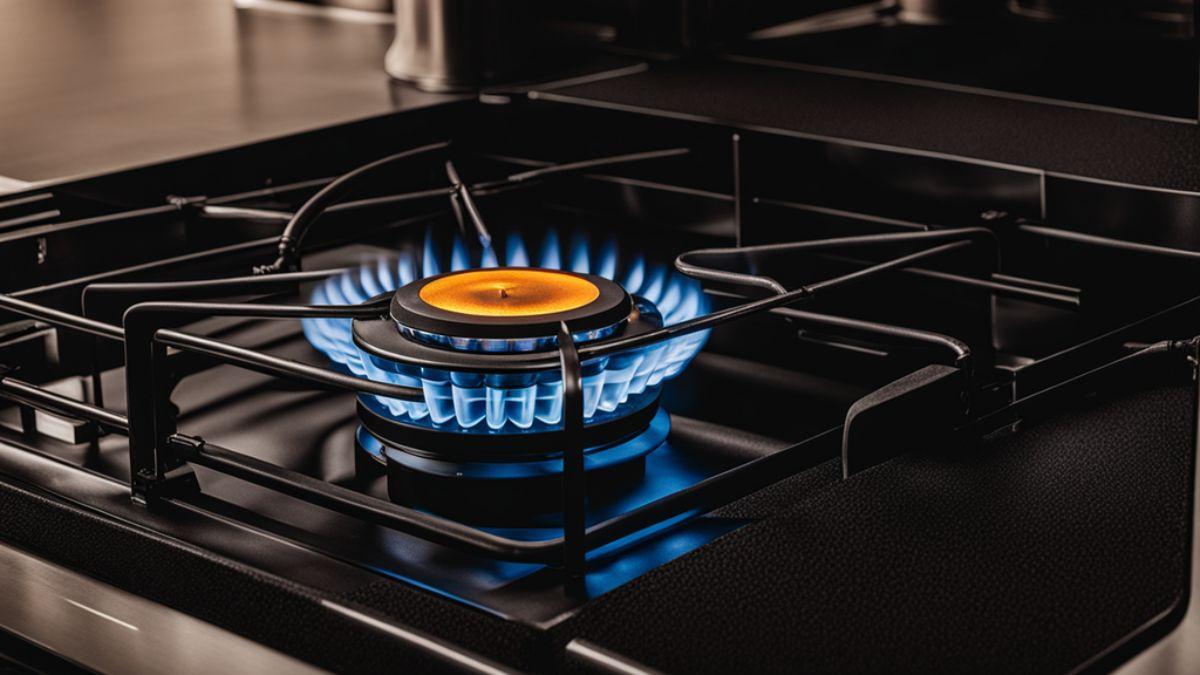
We may earn money or products from the companies mentioned in this post.
An electric stove burner coil can reach temperatures up to around 500-650 degrees Fahrenheit (260-343 degrees Celsius). This maximum heat level depends on the stove’s design and settings.
Understanding the heat capacity of an electric stove burner coil is crucial for both cooking efficiency and safety. Electric stoves provide a convenient and controlled method of cooking, with the coil serving as the primary heat source. These coils convert electrical energy into heat through resistance, causing them to glow red and transfer heat to cookware.
Home chefs and professional cooks alike rely on this information to make informed decisions about cooking times and techniques. Proper knowledge of your stove’s capabilities ensures not only that meals are prepared to perfection but also that the appliance is used within its safety limits. Keeping track of stove temperatures helps prevent accidents, food overcooking, or undercooking, preserving the longevity of your electric stove and your culinary creations.
Reed: Unleash Culinary Excellence: Top 6 Pots and Pans for Gas Stoves

Credit: www.amazon.com
Introduction
Exploring the limits of kitchen appliances, we delve into the capacities of electric stove burner coils. Typically, these coils can reach temperatures up to 1000°F, ensuring efficient cooking and a broad range of culinary possibilities.
Understanding The Power Of Your Electric Stove
Have you ever pondered the searing capabilities of the coil perched atop your kitchen’s electric stove? With the turn of a dial, your everyday meals are transformed into culinary delights. The electric stove burner coil, an often overlooked champion in the kitchen, reaches temperatures that unfailingly alter ingredients from their raw form into delectable dishes.
But just how hot can these coils actually get?
Achieving The Perfect Temperature: Electric Stove Capabilities
- Heat Settings:
The majority of electric stove burners offer a variety of heat settings, generally ranging from a low simmer to a high sear.
- Maximum Temperature:
On its highest setting, an electric burner can typically reach up to 500°F (260°C) or more, enabling you to quickly boil water or sear meats.
Maintaining Safety And Efficiency
While marveling over the intense heat your electric stove burner coil can produce, it’s critical to consider safe cooking practices. These sleek spirals are not only a source of heat but also a potential hazard if not managed correctly.
- Regular Inspection:
Regularly examine the coil for cleanliness and structural integrity, as accumulated debris or damages can affect performance and safety.
- Preventative Measures:
Use stove accessories, such as drip pans, to catch spills and reduce the risk of fire, ensuring a secure and efficient cooking environment.
Harnessing the power of an electric stove goes beyond simply turning a knob. Understanding the peak temperatures that the coils can reach and respecting the power they wield is essential in mastering the art of electric stove cooking. Whether you’re simmering a delicate sauce or charring a steak to perfection, the command of the burner coil temperatures can make all the difference in your culinary pursuits.
Reed: The Best Pots and Pans for Electric Stove: Save Time and Money
What Powers Electric Stove Burners?

Electric stove burner coils heat up through electrical resistance, often reaching temperatures up to 500-650 degrees Fahrenheit. This heat is generated by the flow of electrical current through the coil, directly translating into thermal energy for cooking.
Electric stove burners, those reliable cooktop companions, are powered in a way that’s quite straightforward yet fascinating. A typical burner on an electric stove receives its energy from your home’s electricity supply. Here we unravel the components that allow these burners to heat up your pots and pans:
- Electricity Source: Home outlets provide the necessary voltage.
- Electric Coils: These are the heating elements, where electrical energy turns into heat.
- Internal Wiring: Wires transport electricity to the coils safely.
- Control Mechanism: Knobs or switches let you regulate temperature.
By adjusting the knob, you control the amount of electricity flowing to the burner, hence altering the heat output. Simple yet so effective!
How Hot Can A Burner Coil Get?
Delving into the heat potential of an electric stove burner coil, we find a remarkable capacity. On average, these coils can reach temperatures high enough to satisfy all your cooking needs, hence their widespread use. Here’s what you should know about their heating capabilities:
- Maximum Temperature: Burner coils typically reach up to around 700 to 800 degrees Fahrenheit (371 to 427 degrees Celsius).
- Heat Settings: Lower settings allow for a gentle simmer, while higher settings can bring water to a rapid boil.
- Material Capacity: The coils are made of a durable alloy capable of withstanding high temperatures without damage.
Electric stove burner coils are marvels of modern culinary technology, providing efficient and adjustable heat for a multitude of cooking tasks. They’re designed to safely reach the high temperatures needed for everything from a low and slow simmer to a fierce sear.
Reed: Discover Electric Stove Safety: How Hot Does Electric Stove Get?
Temperature Range: A Look At The Numbers
Exploring the heat capabilities of electric stove burner coils reveals their impressive temperature range. Such coils typically reach upwards of 500°F, underscoring their efficiency in cooking and boiling.
Understanding Electric Stove Burner Temperatures
When exploring the capabilities of your kitchen appliances, have you ever wondered just how hot your electric stove can get? The temperature capabilities of an electric stove burner coil are crucial for a variety of cooking techniques, from simmering delicate sauces to searing steaks.
Electric stove burner coils are designed to cater to a wide range of cooking needs, and their temperature range reflects this versatility:
- Lower-end of the spectrum: Typically, electric burners can go as low as around 150°F (65°C). This gentle heat is perfect for slowly melting chocolate or keeping sauces warm without causing them to boil over.
- Moderate heating levels: For common cooking tasks like sautéing vegetables or pan-frying fish, the burner can reach medium temperatures of approximately 300°F to 400°F (150°C to 205°C). This range is also ideal for cooking pasta or simmering soups.
- High-temperature cooking: Cranking the heat up, electric stove burners can achieve temperatures around 500°F to 650°F (260°C to 345°C). This level of heat is suitable for searing meats or stir-frying at high speed, giving that delightful caramelization and char.
- Maximum temperature: On the highest setting, some electric stove burners can soar up to around 800°F (425°C). Such intense heat is often used for quick searing or for boiling water rapidly.
Implications Of Heat Settings On Cooking
Choosing the right temperature is essential to achieving the perfect dish. With the precise control offered by electric stove burner coils, you can adjust the heat to match the cooking method required for your culinary creations:
- Low settings for slow cooking: Gentle heat allows for flavors to meld and develop over time. Think slow-cooked stews or tender, fall-apart braised meats.
- Medium heat for everyday tasks: This is the go-to range for most recipes. Whether you’re boiling eggs, making pancakes, or sautéing a stir-fry, a moderate heat setting gives you great control.
- High heat for that perfect sear: When you want to lock in juices and create a flavorful crust, high heat is your best friend. Use it for quick cooking and getting that restaurant-quality finish on your meats and vegetables.
- Peak temperatures for the toughest jobs: When faced with tasks like canning or getting a pot of water to a rolling boil fast, the highest heat setting on your electric stove burner gets the job done efficiently.
Remember, the actual temperature you’ll want to use can vary depending on the material and thickness of your cookware, as well as the specific requirements of the dish you’re preparing. Always stay attentive to the changes in your cooking environment to prevent overcooking or burning your food.
With this knowledge of temperature ranges and practical applications, you’ll be able to unlock the full potential of your electric stove.
Reed: Top-Rated Best Cookware for Gas Stoves: Revieaws and Recommendations
The Influence Of Burner Size And Type
Electric stove burner coils can reach extreme temperatures, influenced by burner size and type. Larger burners and high-wattage models typically generate more heat, enhancing cooking power and efficiency on your electric stove.
Understanding Burner Size Impact
The size of an electric stove burner coil significantly influences its heating capacity. Essentially, the larger the coil, the broader the heat distribution. Larger burners are typically designed to accommodate bigger pans and are intended for tasks requiring more heat over a wider area, like boiling a large pot of water for pasta.
Decoding Different Burner Types
There’s a fascinating variety of burner types available, each with a unique heating element:
- Traditional Coils: These are the common spirals found in many electric stoves, made of resistive wire that heats up as electricity passes through.
- _Consistent Heat_: Provides steady heat distribution, ideal for most cooking needs.
- _Durable_: Known for their longevity and resistance to wear and tear.
- Smooth Top Radiant Burners: These burners lie beneath a flat, ceramic glass surface.
- _Easy to Clean_: The flat surface simplifies cleaning, removing the hassle of food getting stuck.
- _Aesthetic Appeal_: Offers a sleek kitchen look with its seamless integration into the stove’s surface.
- Induction Coils: Utilize electromagnetism to heat cookware directly.
- _Energy Efficient_: Transfers energy directly to the pot or pan, reducing wasted heat.
- _Rapid Heating_: Quickly heats cookware, which can lead to faster cooking times.
A Comparison Of Electric Burners
Electric stove burner coils can reach temperatures upwards of 1000°F, offering a substantial range of various cooking techniques. Understanding the heat capabilities of different electric burners is essential for chefs and homeowners alike to ensure culinary precision and safety.
Electric stove burners are essential in many kitchens, allowing for precise and consistent heating. Unlike their gas counterparts, electric burners rely on electricity to heat the coils and are valued for their ease of cleaning and maintenance. However, they do vary in temperature range and efficiency.
Let’s peek into how different electric burners stack up against each other.
Standard Coil Burners: Heat Output And Design
- Material composition: Standard electric coil burners are typically made from a nichrome wire encased in a metal coil. This material heats up when an electrical current passes through it.
- Maximum temperature: On average, these coils can reach temperatures of up to 500-650°F (260-343°C), although this can vary based on the stove’s design and electrical output.
Regular coil burners are popular due to their availability and budget-friendly price. They are generally less efficient than other types of electric burners because the open coil design loses some heat to the air.
Smooth-top Electric Burners: Efficiency And Aesthetics
Smooth-top stoves have a sleek appearance, featuring a flat cooktop that houses the heating elements beneath a ceramic glass surface. This setup enhances heat transfer and provides the following attributes:
- Improved efficiency: The flat surface design minimizes heat loss, ensuring more direct heating of cookware.
- Easier cleaning: Since the heating elements are not exposed, spills and splatters are easier to wipe away without the need for dismantling any coils.
- Higher heat potential: Smooth-top burners usually heat up faster and can achieve higher temperatures, often exceeding 700°F (371°C), which is ideal for searing or boiling water quickly.
In the electric burner arena, smooth-top models are known for their modern look and are considered a step up in terms of efficiency and hygiene.
Safety Considerations
Understanding the temperature limits of electric stove burner coils is essential for kitchen safety. Electric burners can reach upwards of 500°F, posing risks such as burns and fire hazards. Keep a vigilant eye while cooking, and always handle with caution to prevent accidents.
Cooking on an electric stove can feel like a dance between culinary art and kitchen safety. As the heart of your stove, the burner coils are powerful elements that transform electric energy into the heat needed to whip up your favorite dishes.
Though essential, it’s critical to understand the potential risks to ensure a safe cooking environment for both novice and experienced chefs alike. Let’s delve into the nuts and bolts of safely operating these kitchen workhorses.
Understanding Maximum Temperature Limits
Electric stove burner coils are designed to reach high temperatures. It’s typical for these coils to heat up to around 500 to 650 degrees Fahrenheit (260 to 343 degrees Celsius). High-quality stoves might even push the boundary further under specific settings.
Knowing this maximum temperature limit is crucial, as it gives you insight into the kind of cookware to use and the safety measures to take while cooking.
Safety Precautions When Using Burner Coils
To safeguard yourself and your kitchen from accidents involving your electric stove:
- Proper Cookware Placement:
Ensure all pans and pots are centered on the burner coils. This prevents uneven heating and reduces the risk of spills that could lead to burns or fires.
- Regular Inspection:
Periodically check the condition of your burner coils. Issues like warping or damage can affect how the unit operates and potentially cause hazards.
- Timely Turn-off:
Always remember to turn off the burner immediately after use. A burner left on can become a fire hazard, especially if forgotten.
First Aid For Burner Coil Burns
The unfortunate event of a burn demands quick and efficient first-aid treatment. Here’s what to do:
- Immediate Cooling:
Cool the affected area under lukewarm water for several minutes. Avoid using ice as it can lead to further skin damage.
- Seek Medical Attention:
If the burn is severe, involves a large area or has affected deeper layers of skin, promptly seek professional medical help.
Preventing Coil Overheating
Even when they’re built to handle intense heat, burner coils have their limits. To prevent overheating:
- Monitor Cooking Times:
Keeping an eye on your cooking time not only ensures well-prepared meals but also helps in avoiding overheating of the coils.
- Avoid Empty Heat:
Never turn on the burners without a pot or pan atop. An empty burner can overheat quickly, reducing its lifespan and increasing the risk of damage.
Remember, your safety in the kitchen isn’t just a responsibility—it’s the key ingredient in the recipe for a joyful cooking experience. Keep these tips in mind, and you’ll ensure that your electric stove serves up both delicious dishes and peace of mind.

Credit: www.americastestkitchen.com
Frequently Asked Questions On How Hot Can An Electric Stove Burner Coil Get
What Is The Maximum Temperature Of Stove Coils?
Can Electric Stove Coils Overheat?
How To Measure Stove Burner Temperature?
Do Stove Coil Temperatures Vary By Setting?
Conclusion
Understanding the heat limits of your electric stove’s burner coil is essential for safe and effective cooking. It’s clear that extreme temperatures, reaching up to 1000°F, are achievable. Remember to cook responsibly, monitor your food closely, and maintain your stove regularly to ensure optimal performance and safety in your culinary adventures.






